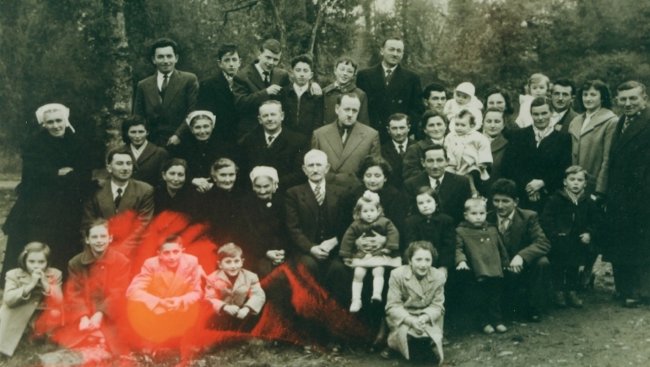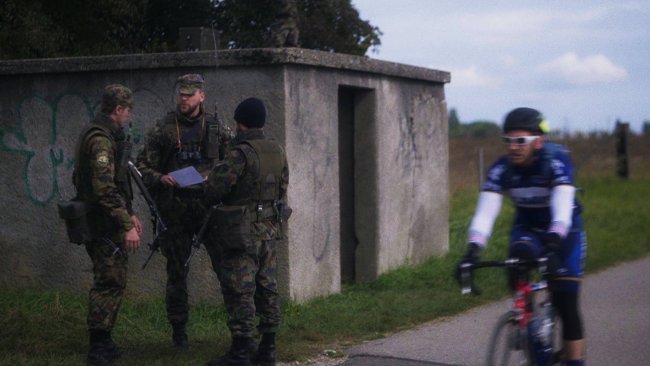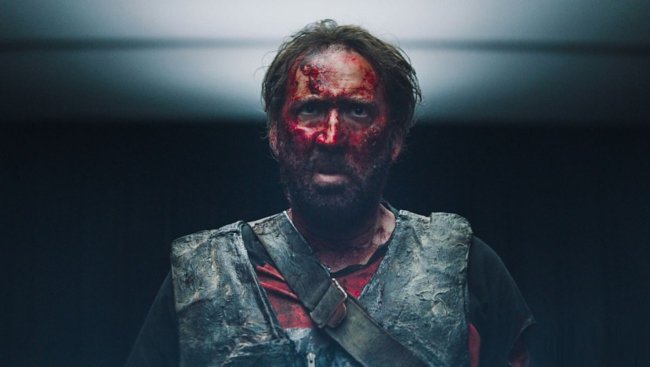Srbenka
[…] This “laterality” of the camera perspective – together with a fragmented and thereby stimulating editing style – provides us with an intellectual aloofness that allows us to reflect, and so counterbalancing the strong emotions that we are witnessing and experiencing.
[…] As a whole, «Srbenka» seems quite sympathetic to Frljić’s proposition, but if we adequately stress the very interesting treatment of the form of the film, we cannot but see how the timid yet explicit hints of a critical stance on Frljić’s “violent” position are enhanced by an open form that pushes us to reflect, and – hopefully – to take our distances from the emotive tour-de-force that will bring nothing but an already obsolete war of positions between two phantom ethnicities.
Text: Giuseppe Di Salvatore

The result of a long process of shooting, Nebojša Slijepčević’s Srbenka gives us access to the rehearsals of a theatre piece dedicated to the death of Aleksandra Zec, a 12-year-old Serbian girl killed by the Croatian militia during the Serbo-Croat war in the Nineties. The theatre director Oliver Frljić is both instigator and hero of what is perceived to be a politically incorrect stance, as this stance irritates the rampant Croatian right wing and its policies of spreading ethnic hatred today. Through the highly emotional turmoil of the actors being personally and artistically confronted by the very delicate theme of ethnicity in the post-war period, our filmic perception is compelled to blur the borderlines between reality and fiction, and to face the dilemma of concurrently being both victims and executioners. This dilemma concerns the protagonists of the film but will finally concern our own position as audience, as the strong empathy that the film is able to convey cannot but make us either accomplices or enemies of Frljić’s project.
Slijepčević’s filmic style is highly inventive and formally complex. The treatment of the sound creates the emotive tempo of the scenes that are almost exclusively focused on the violent exercises that the actors are imposing upon themselves. The discussion of the theatrical choices becomes the even more difficult exercise of finding an appropriate level of detachment – from the past, from one’s own inner wounds, from the stage, from the other actors, from the Other, from the Other's being Croatian or Serbian. This distance is cinematographically created through a camera that is constantly searching for the gaze of the spectator of the action than that of the actor. This “laterality” of the camera perspective – together with a fragmented and thereby stimulating editing style – provides us with an intellectual aloofness that allows us to reflect, and so counterbalancing the strong emotions that we are witnessing and experiencing.
My reflection on Frljić’s project takes the form of the following questions: Is it really interesting to attack the right-wing people spreading the ethnic hatred confronting them with their own faults? Is the recognition of the Croatian’s faults in the war a good way to offset the claims against the Serbian faults? History has largely shown us that the best way to cope with the ethnic hatred is not to highlight how the faults are mutual, but to deconstruct the very notion of ethnicity, of separateness. The belonging to a group that has its own language and specific traditions can be a treasure, but should remain only the starting point for an individual self-determination of one’s own identity that goes beyond any definition in terms of the belonging to a group. The best attitude for everyone who is seeking peaceful cohabitation is not the search for a mutual respect of rigidly defined social identities, but the creation of strategies of intercultural confluences that allow the individual to develop his/her own personality. After all, in Europe, we are all bastards – in culture, habits, language, and history. Ethnicity and the idea of “nations” seem now to be anachronistic concepts that we have inherited from a recent past. It is time to emancipate ourselves from such violence-inducing phantoms!
Srbenka has given me the time to develop my own reflection on the subject of the film; in the last part of it, I was focused on trying to understand how much Slijepčević’s work is really meant to create a distance from Frljić’s theatrical project. As a whole, Srbenka seems quite sympathetic to Frljić’s proposition, but if we adequately stress the very interesting treatment of the form of the film, we cannot but see how the timid yet explicit hints of a critical stance on Frljić’s “violent” position are enhanced by an open form that pushes us to reflect, and – hopefully – to take our distances from the emotive tour-de-force that will bring nothing but an already obsolete war of positions between two phantom ethnicities.
This article contains a third-party video. If you would like to watch the video, please adjust your settings.
Info
Srbenka | Film | Nebojša Slijepčević | HR 2018 | 72’ | Visions du Reel Nyon 2018, Human Rights Film Festival Zurich 2018
First published: April 22, 2018



